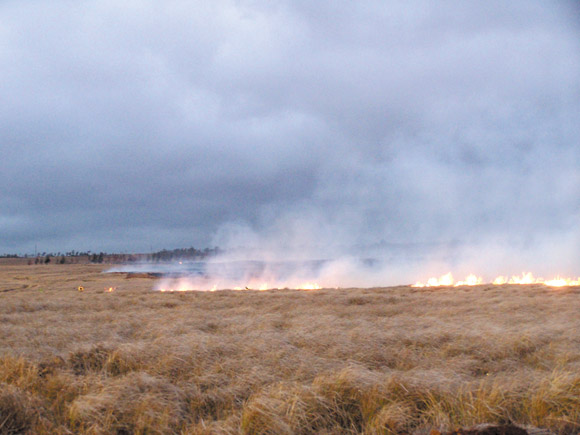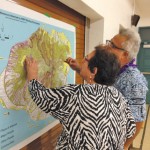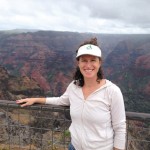Hot Under The Collar Over Wildfires

Wildfires like this one are increasing across the island and are extremely detrimental in a variety of ways
Kauai wildfires are on the rise, and Hawaii Wildfire Management Organization needs the community’s involvement to prevent outbreaks
Wildfires are sparking more and more across the island, from Anahola to Kokee. All of them are preventable, except for the rare fire ignited by lightning or another natural cause (less than 2 percent of wildfires start this way in Hawaii). This is precisely why Ilene Grossman, planning assistant for Hawaii Wildfire Management Organization, has been working to update the Community Wildfire Protection Plan by organizing meetings across the state to develop new solutions to wildfire issues.
The plan works with local, federal, state and county governments, as well as community members, organizations and landowners. Concerns, recommendations for projects, and wildfire-hazard and fire-history maps are among many topics that recently have been addressed.
“I want to do my part in protecting the Hawaiian Islands’ natural and cultural resources,” says Grossman. “Wildfires have a devastating impact on our islands in general, and I want to offer my time to help our communities with this growing issue.”
There are several reasons for the increasing number of wildfires. Since people are the primary culprits, a growing population contributes to the spread. In addition, more development in fire-prone areas, an increase in non-native vegetation and prolonged drought seasons also are contributing factors.
- Community members across the state have been asked to weigh in on ways to help mitigate wildfires
- Ilene Grossman wants to help preserve native habitats like those in Kokee from wildfires | Photos courtesy of Ilene Grossman
As long as residents do their part by being proactive and informed, the number of fires can decrease. Regular maintenance of yards and landscaping, for example, is one way to help mitigate fires. It’s important for the community to work together to make this happen, including government entities, as wildfires are both dangerous and expensive.
“When fires burn native forest, what comes back are non-native, invasive grasses and other species that are more fire prone, creating a vicious cycle of fire,” explains Grossman.
Additionally, after a fire, soil drifts into the waterways, smothers reefs and impacts water quality. Air quality is yet another concern that especially impacts fire-fighters. Moreover, the cost to taxpayers to put out each fire and rebuild afterward is another negative effect.
But wildfires aren’t exactly at the top of everyone’s priorities.
“Wildfire is not the No. 1 issue for many people, and therefore is lower on their lists of things to do to improve the safety of their community, despite its long-lasting and broad-reaching impacts,” laments Grossman.
The next step in the Community Wildfire Protection Plan process is to analyze data collected from the March meetings. A draft will be made available to participants and public agencies, including Kauai Fire Department, by next winter season. The plan will be completed after final revisions are made.
Grossman hopes to encourage more people to pay attention to the destructive impacts of wildfires on our land and water.
To get involved or for more information, visit hawaiiwildfire.org.
cocomidweek@gmail.com





